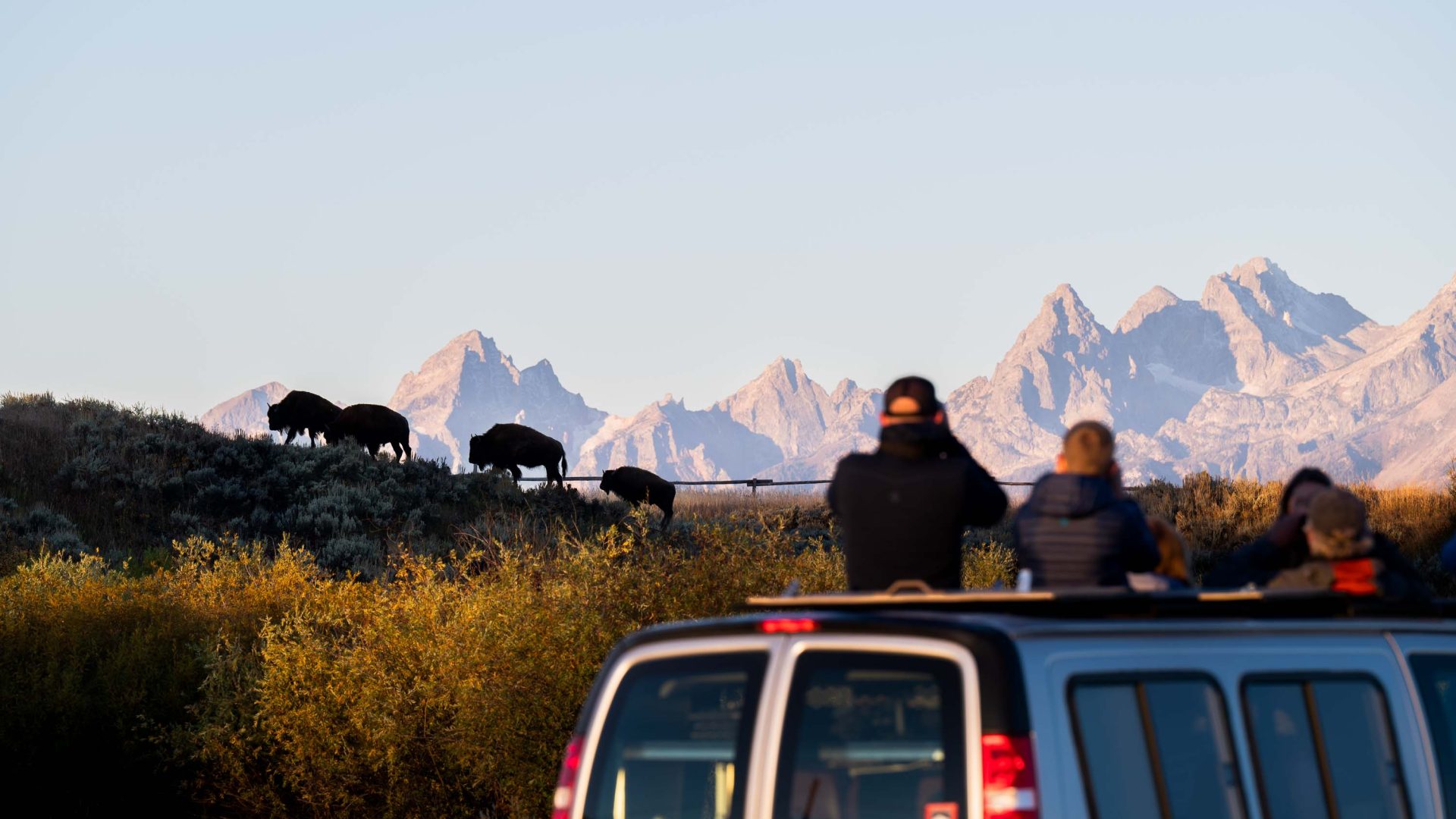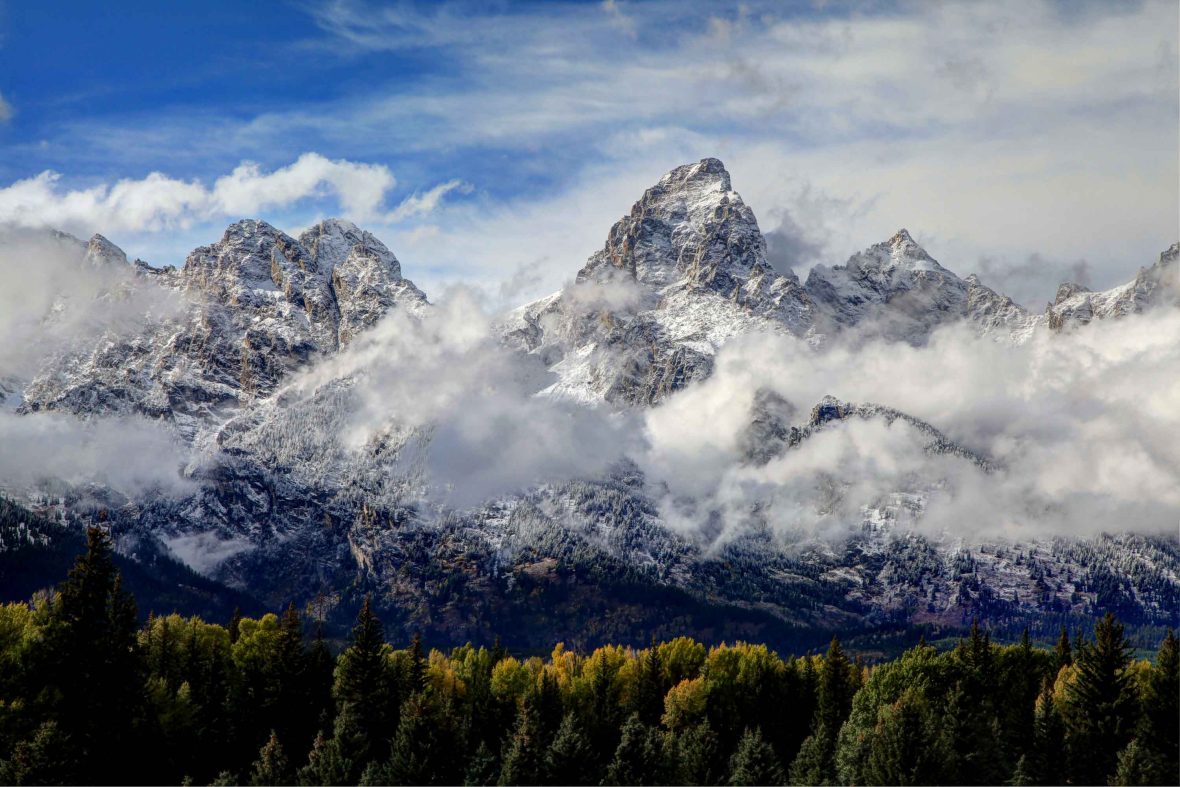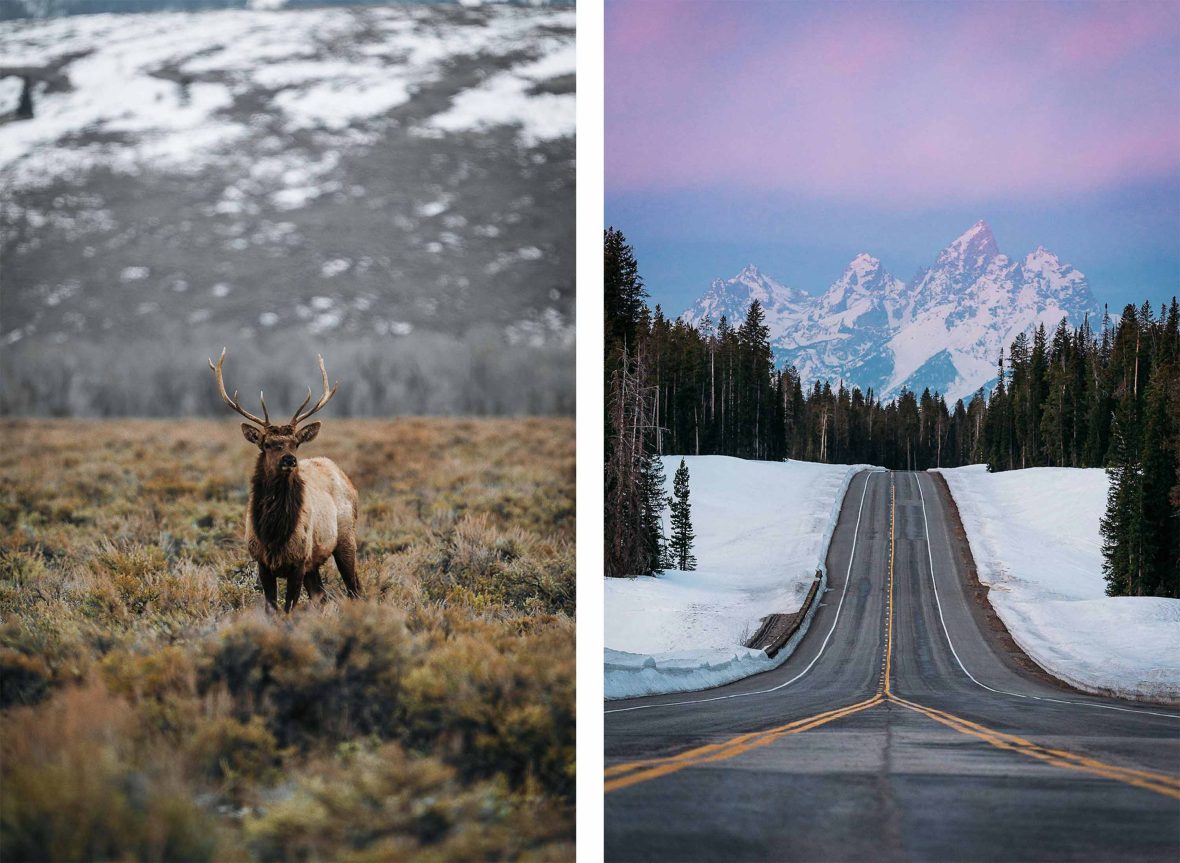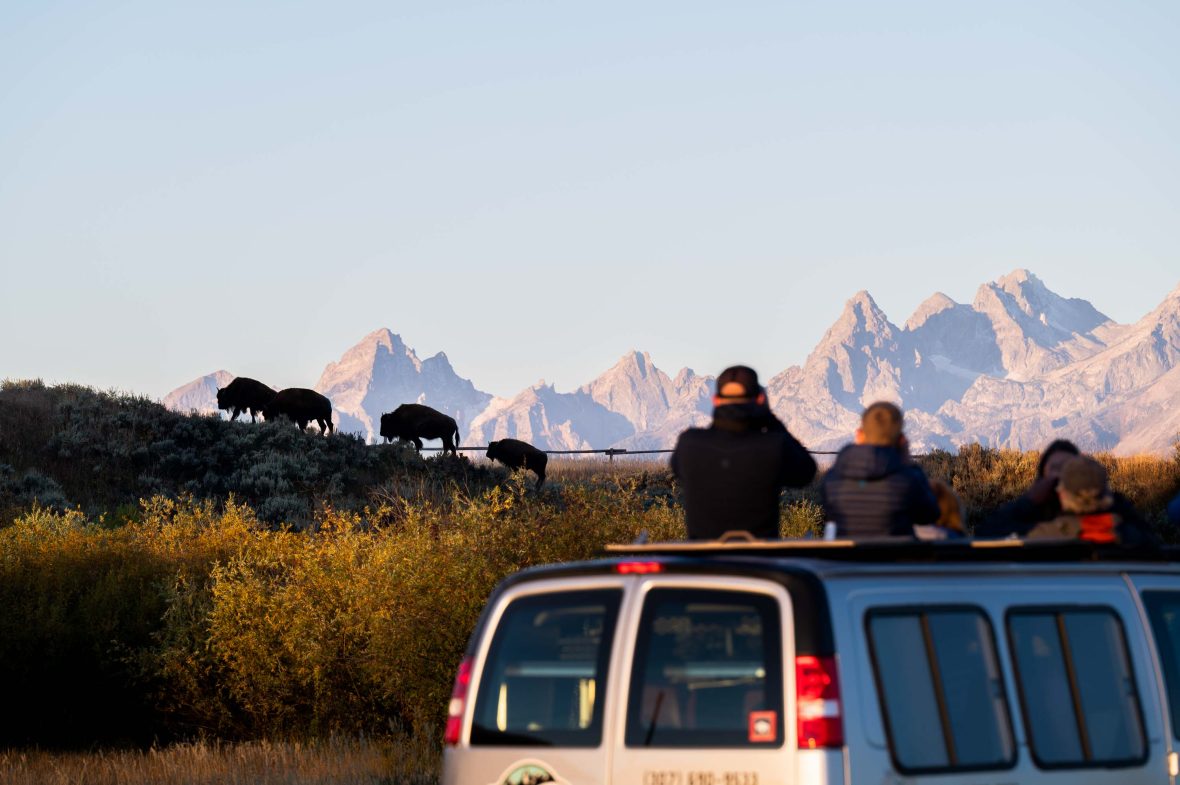
Wildlife tourism is a booming industry—but the very wildlife we love is still at risk. The innovative WYldlife for Tomorrow cooperative in the Rocky Mountains is trying to parlay tourism into conservation.


Wildlife tourism is a booming industry—but the very wildlife we love is still at risk. The innovative WYldlife for Tomorrow cooperative in the Rocky Mountains is trying to parlay tourism into conservation.
When you step off a plane and into the airport in Jackson Hole, Wyoming, it’s tough to not be floored by instant wonder. The imposing peaks of the famed Teton mountains tower overhead. Occasionally, herds of mule deer, elk and pronghorn antelope pepper the meadows of the valleys surrounding the town and all who inhabit it, still making use of their traditional habitat on the open sage steppe. Despite the jet engines, the highways in and out of town, and the raucous nights in the Cowboy Bar, nature is ever-present. The wildlife in these parts still seem to understand that this is—and should be—their home first.
It’s good news for the hopeful wildlife watchers who make up the bulk of Wyoming’s eight million annual visitors. Native moose, wolves, bears, bison and raptors are at the top of bucket lists—bringing folks from around the world to see them in their natural habitat to the tune of a USD$4.6 billion economic boon annually. Tourism is the state’s second-largest economy, with wildlife viewing at the top of the list of reasons folks travel to the area. With that kind of economic might, the question begs: If we love wildlife so much, why aren’t we doing more to protect it?

Tourism and attendant industries such as real estate and retail have, for the most part, met the question with a deafening silence, even with the obvious benefits wildlife and tourism bring to their bottom lines. Businesses all across Wyoming see concrete benefits, thanks to wildlife tourism and the region’s natural resources. More people drawn to viewing wildlife means more people at the coffee shop, eating dinner, more galleries for viewing wildlife art and more marketing opportunities for lodging and real estate near public lands.
“We have a long way to go, but we can’t take what we have now with our wildlife for granted.”
- Chris McBarnes, WYld Fund
“There has been talk of getting businesses and the tourism industry involved in supporting wildlife financially for years,” Taylor Phillips, the founder of EcoTour Adventures in Jackson Hole says. But until now, that talk wasn’t reality.
Phillips is witnessing firsthand the impacts that ongoing loss and alteration of wildlife habitat, increased traffic and human presence have on the wildlife upon which his own business and many others depend. That’s why he wanted to make it easy—really easy—for everyone to give back.
As a member of the business community, Phillips developed a funding concept for businesses to directly support wildlife conservation in the state. In March 2020, the Wyoming Game and Fish Department (WYGF) voted to create a non-profit arm for philanthropic donations to help with its increasing responsibilities and stifled budget. Phillips then introduced his concept to allow private businesses to directly fund wildlife conservation. WYGF quickly adopted it as the flagship initiative for their new non-governmental organization, the WYldlife Fund. Phillips’ pitch came to life as the WYldlife for Tomorrow project.
“Taylor recognized there is no structured tax in place to support wildlife, which supports the entire tourism industry,” says Chris McBarnes, the inaugural executive director of the two-employee WYldlife Fund. “WYIdlife for Tomorrow makes customized, voluntary giving easier for businesses. In our first year we’ve had more than 70 businesses join. And yes, we do have a long way to go, but we can’t take what we have now with our wildlife for granted.”
Projects include money for road crossings, removal or modification of fences impeding migration, habitat restoration, conservation easement purchases and microgrants. Partners include tribal leaders, private landowners, state and federal agencies and land managers, researchers and other nonprofits.
For Pete MacIlwaine, co-owner of Cowboy Coffee, a busy café and roaster serving locals and tourists in Jackson Hole, WYldlife for Tomorrow presented a perfect opportunity. “Taylor’s project recognizes that businesses benefit from wildlife and allows us to help that wildlife—something we are passionate about,” he says. “It makes us feel good—we can choose and see where our money goes.”
It’s not easy to create solutions for issues that are so interconnected and sprawling—much like a mirror to the Western Rockies themselves.
Funding for fence mitigation and safe road crossings is high on the list. According to the Wyoming Department of Transportation, more than 7,000 big game animals (not counting smaller animals or birds) are hit and killed by cars each year. Of the animals that die on those roadsides, 88 percent are mule deer, an iconic species native to the Rocky Mountain West. And in big snow years, winter mortality can be brutal.
“This year for example, we are predicting 40 to 60 percent winter survival of the adult Wyoming Range mule deer, and very few fawns,” says McBarnes. “It is devastating to hear such numbers, but it gives me greater resolve.”

In its first year, the fund has raised over USD$200,000. Of that, 97 percent has gone directly to wildlife projects, above the mandated 90 percent minimum for nonprofits. Within five years, both McBarnes and Phillips expect funding to be climbing well into seven figures. “It will take the private sector partnering with the public sector to get us where we need to be,” McBarnes says.
Contributing businesses will be able to highlight the program for visitors, providing an educational opportunity to learn about issues facing wildlife and the successful projects the organization is funding.
The first few projects have been notable, including 30 miles of fencing to safeguard mule deer and other animals across a section of Interstate 25 in eastern Wyoming, updating what is recorded as the second-deadliest road crossing for Wyoming’s mule deer.
The WYldlife Fund also helped fund two new positions that specifically connect the Wind River Indian Reservation and its conservation efforts with financing, beginning in 2023 with The Nature Conservancy and the Greater Yellowstone Coalition. This will allow the Eastern Shoshone and Northern Arapaho tribes to have more power in statewide conservation efforts.

It’s not easy to create solutions for issues that are so interconnected and sprawling—much like a mirror to the Western Rockies themselves. But collaboration between tourists, government organizations, Indigenous tribes and business owners is proving that cooperative action complements the complexity of the environment here.
“It can take some explaining for people to understand why we are doing this,” says Mark Wilson, real estate broker with 307 Premiere Properties in Buffalo, Wyoming. “Visitors don’t always understand the issues on the ground here, so we’re poised to explain. Wildlife has supported us all these years, so it is an easy topic to discuss. Personally, I feel obligated to give back to the creatures who have given me so much.”

Based in Jackson, Wyoming, Brigid Mander is a writer covering topics in the outdoors, including freeskiing and ski mountaineering around the world, backcountry archery hunting in Wyoming's wilderness, and large habitat preservation for the wildlife and peoples of the American West. She contributes regularly to a variety of publications, from Backcountry Magazine to The Wall Street Journal.








Can't find what you're looking for? Try using these tags: